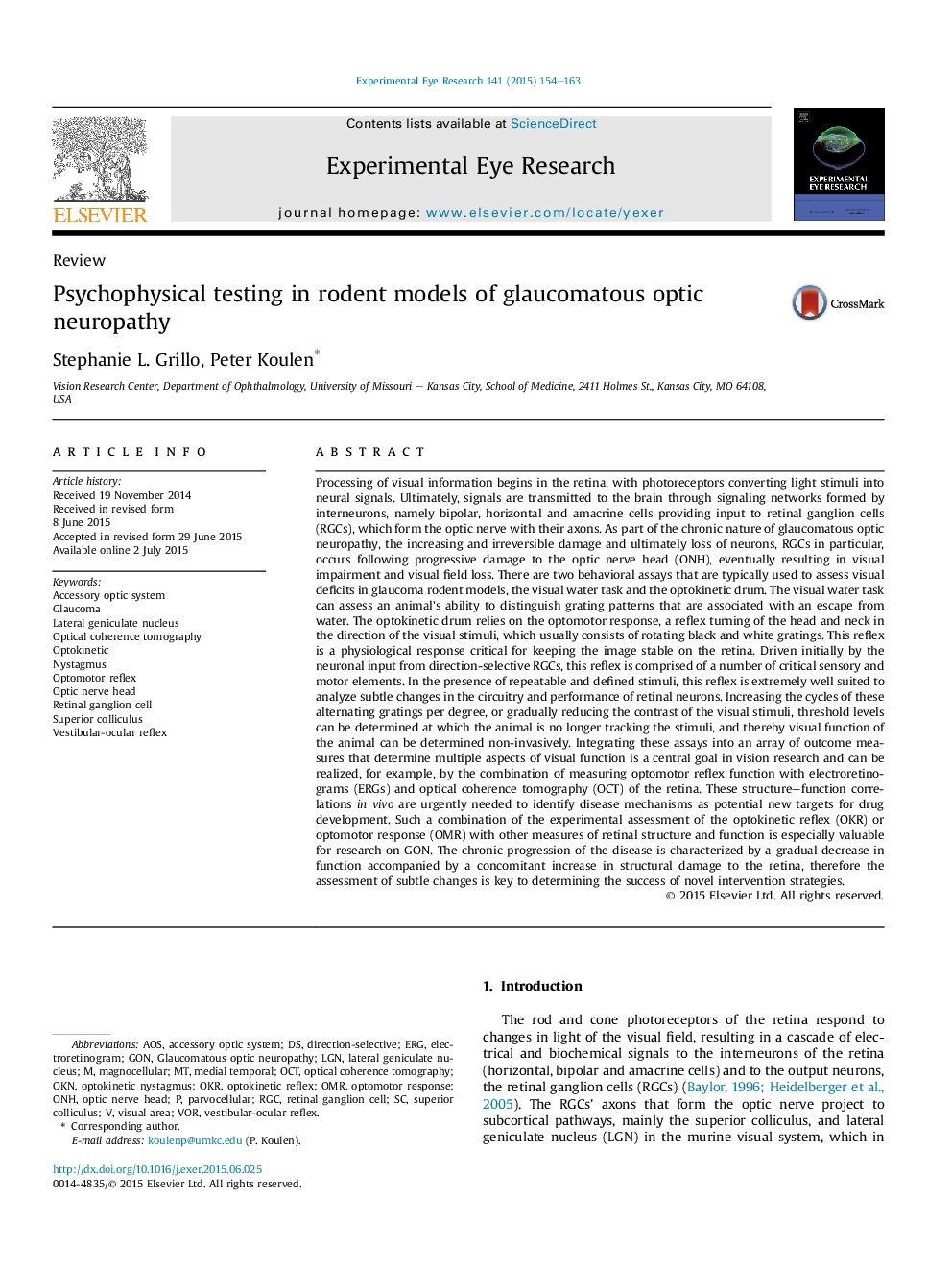| کد مقاله | کد نشریه | سال انتشار | مقاله انگلیسی | نسخه تمام متن |
|---|---|---|---|---|
| 6196554 | 1602581 | 2015 | 10 صفحه PDF | دانلود رایگان |
- The review provides an overview of psychophysical testing in rodent models of glaucomatous optic neuropathy.
- A specific emphasis is placed on techniques measuring the optokinetic reflex.
- The review covers an emerging technology with increasing relevance for assessing visual impairment in pre-clinical studies.
- The review discusses the integration psychophysical testing into an array of outcome measures of visual function.
Processing of visual information begins in the retina, with photoreceptors converting light stimuli into neural signals. Ultimately, signals are transmitted to the brain through signaling networks formed by interneurons, namely bipolar, horizontal and amacrine cells providing input to retinal ganglion cells (RGCs), which form the optic nerve with their axons. As part of the chronic nature of glaucomatous optic neuropathy, the increasing and irreversible damage and ultimately loss of neurons, RGCs in particular, occurs following progressive damage to the optic nerve head (ONH), eventually resulting in visual impairment and visual field loss. There are two behavioral assays that are typically used to assess visual deficits in glaucoma rodent models, the visual water task and the optokinetic drum. The visual water task can assess an animal's ability to distinguish grating patterns that are associated with an escape from water. The optokinetic drum relies on the optomotor response, a reflex turning of the head and neck in the direction of the visual stimuli, which usually consists of rotating black and white gratings. This reflex is a physiological response critical for keeping the image stable on the retina. Driven initially by the neuronal input from direction-selective RGCs, this reflex is comprised of a number of critical sensory and motor elements. In the presence of repeatable and defined stimuli, this reflex is extremely well suited to analyze subtle changes in the circuitry and performance of retinal neurons. Increasing the cycles of these alternating gratings per degree, or gradually reducing the contrast of the visual stimuli, threshold levels can be determined at which the animal is no longer tracking the stimuli, and thereby visual function of the animal can be determined non-invasively. Integrating these assays into an array of outcome measures that determine multiple aspects of visual function is a central goal in vision research and can be realized, for example, by the combination of measuring optomotor reflex function with electroretinograms (ERGs) and optical coherence tomography (OCT) of the retina. These structure-function correlations in vivo are urgently needed to identify disease mechanisms as potential new targets for drug development. Such a combination of the experimental assessment of the optokinetic reflex (OKR) or optomotor response (OMR) with other measures of retinal structure and function is especially valuable for research on GON. The chronic progression of the disease is characterized by a gradual decrease in function accompanied by a concomitant increase in structural damage to the retina, therefore the assessment of subtle changes is key to determining the success of novel intervention strategies.
Journal: Experimental Eye Research - Volume 141, December 2015, Pages 154-163
